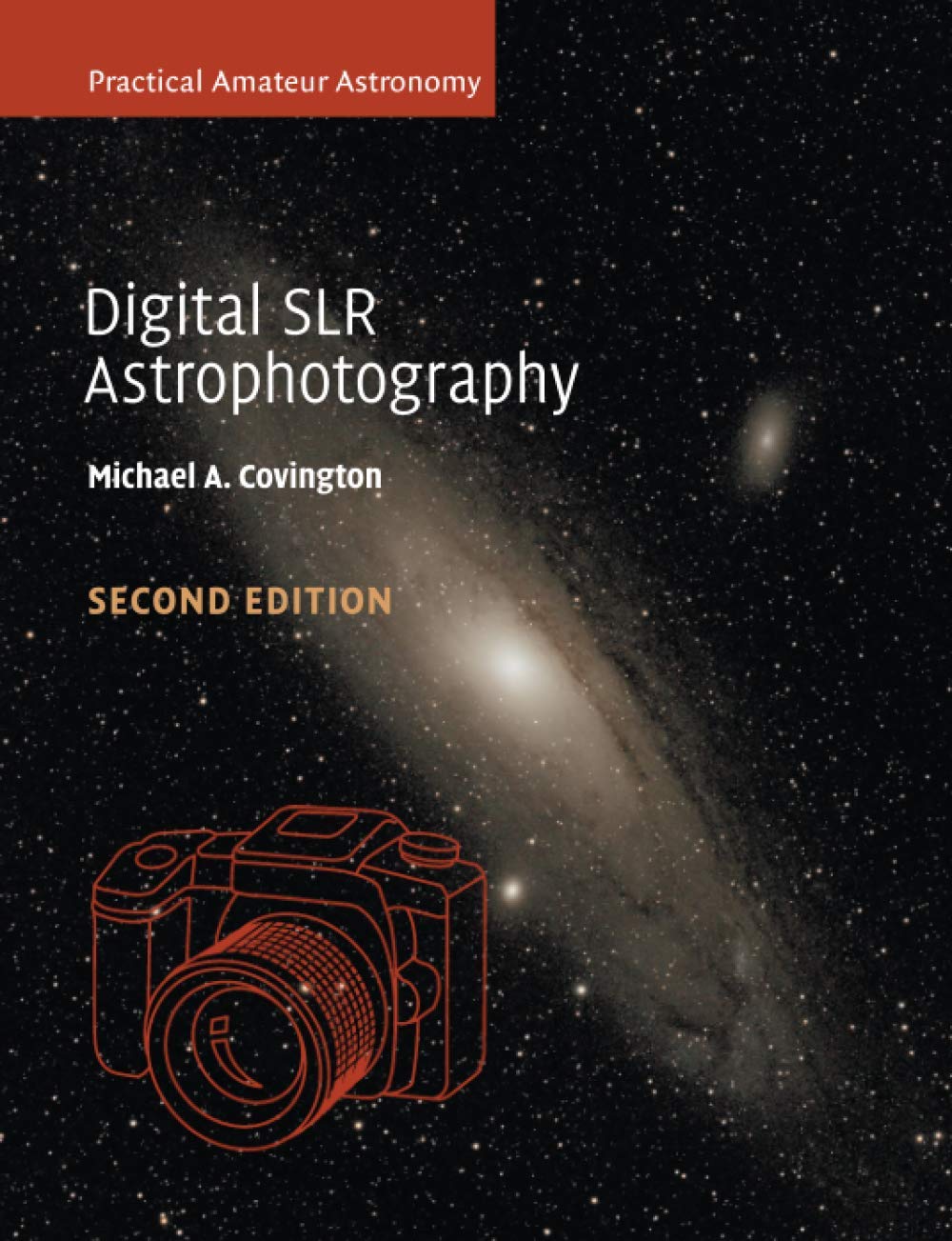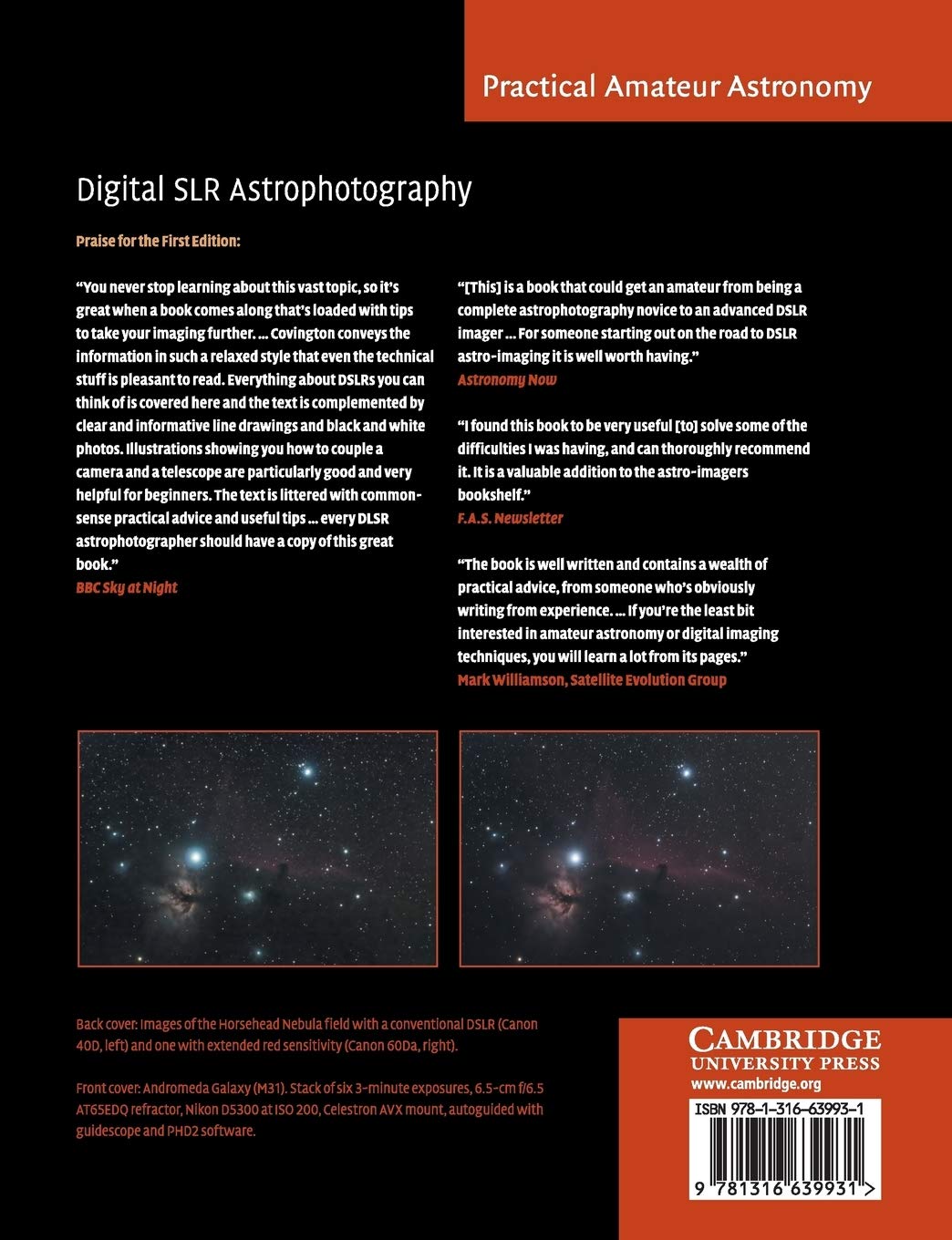Customer Services
Copyright © 2025 Desertcart Holdings Limited
Desert Online General Trading LLC
Dubai, United Arab Emirates



Full description not available
A**R
Simply Excellent for the New Entrant
I am a novice astrophotographer but have some experience with terrestrial and underwater photography. I have at least one other astroimaging book which, at times, goes into very deep detail. So deep that I find myself losing focus.This book is just right for my level. The language is CLEAR and CONCISE. The amount of depth provided is adequate and helpful but not overbearing. It is written at a level where most amateurs and entrants into the field can understand what is being described. I feel this aspect cannot be overstated. Keeping a readers interest and speaking at their level is the difference between a great book and a book that isn’t as helpful.Very well done. Thank you, you must have put an incredible amount of time into this.I would love to see you write a start to finish book on using Astro Pixel Processor.
G**N
Read this first.
If you think you want to do Astrophotography with a DSLR camera then i suggest you read this book first. It won't beat you over the head the technical stuff like post processing or anything else that complicated. What it will do is give you a good idea of how to get started and the equipment needed to have some success in the hobby. It's a very easy read with the information you need to understand what it takes to do long (a few seconds to a few minutes) exposure of the night sky. Astrophotography can be a very expensive hobby if you let it but it can also be done with a reasonable expenditure if you do a reasonable amount of research and this book is a great place to start. I bought this book in February of this year (2019) and i still read portions of it just as a refresher. I highly recommend it. Be sure you get the 2nd edition. Clear skies.
S**D
Understandable & Practical - Discusses Equipment, Options, Pros & Cons
This book is helping me make the leap from 35 mm SLR film astrophotography I did 40 years ago. I've kept my 1978 Celestron-8 telescope in great working order and had its visual back/threads factory-updated to "new" standard a few years ago. Anticipating purchase of a Canon camera with full-frame sensor, the first chapter spells out (as example of many similar considerations) that the smaller APS-C sensors are often a better match to telescope eyepiece tube size. I may still go with full-frame due to interests in occasional wide-field photography too, but the experienced perspective/point on size considerations was really helpful in better understanding options and implications.
P**T
Good information but has uninspiring B&W photos.
I am in the early learning stages of astrophotograhy, deciding on my next steps, equipment, and budget. This book provides good information. On the downside, every photo in the book (there are many) is in black and white. This is extremely uninspiring to someone interested in learning the craft. What potential astrophotographer wants to see a bland picture of a grey nebula or galaxy? The beauty of astrophotograhy is that it brings out the amazing colors that merely looking through an eyepiece cannot deliver.
A**R
Good for a begginer
The book is written woth a beginner in mind. The first part is pretty technical. Its worth a read but mostly to consult later. Once the author gets to the practical stuff, its much easier.Its not a "astrophotography for dummies" so be prepared to try things out and fail. I found it very helpful.
T**Y
The absolute best book ever for dslr astrophotography!
This is the best reference I have ever found for DSLR astrophotography. I own over a hundred astrophotography and astronomy books and this book provides more concise and up-to-date information than all of them combined. If you want to get started in DSLR astrophotography, this is the book you need. Simple explanations of key concepts and step by step walkthroughs make this the best DSLR astrophotography book out there. Well researched, referenced, and well written.
S**R
Complete Revision of the 2007 Version
A search of my bookcases revealed that I was missing my copy of the 2007 1st edition of this book when I was looking for it to read how to correct the "star eater" feature of Nikon cameras . I was dismayed that I couldn't find it and that I had to buy it again. It was probably lost during our 2016 move where multiple items were lost by the mover. I got it today and I am glad I did. It is an almost complete rewrite of the 1st edition. Much has changed in astro-imaging since 2007 and this book captures much of the changes.
G**N
Very informative, nice graphics and figures
It was very well organized and easy too read with just the right level of technical detail. The book also contained a lot of informative graphics, schematics, and sample images of various stellar objects.
Trustpilot
2 months ago
1 month ago